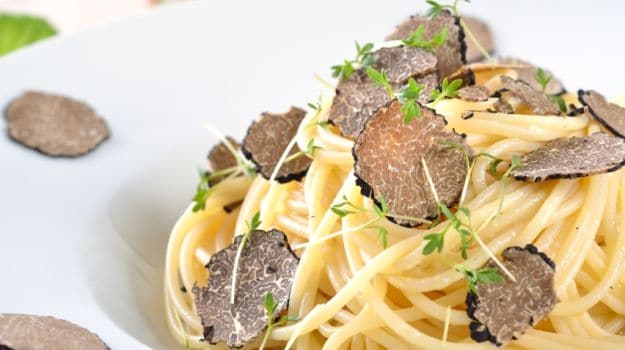
In a new study, experts suggest that truffles which are found mostly in central Europe are safe to eat
and these may contain only negligible amounts of radioactive compounds. The safety of truffles became questionable after the 1986 Chernobyl nuclear disaster in Ukraine that released substantial quantities of radioactive particles, especially caesium-137 (137Cs). Transported by winds and deposited by heavy rainfall, the caesium polluted large swathes of the European continent.
“Much of the continent’s topsoil layers are still radioactively contaminated,” says Ulf Büntgen, head of the dendroecology group at the Swiss Federal Research Institute (WSL) and lead author of the study.
However, that does not seem to have affected the subterranean Burgundy or summer truffles (Tuber aestivum) which are highly prized as a delicacy for their hazel-nutty flavour and intense aroma. “We were very positively surprised that all specimens we analysed exhibited insignificant values of 137Cs,” said Büntgen in a paper published in Biogeosciences, an open access journal of the European Geosciences Union (EGU).
Some experts find this result surprising because many types of fungi, including truffles, grow underground and draw nutrients from soil prone to accumulating radioactive pollution. Deer truffles, for example, a type of ‘false’ truffles (not of the tuber genus) more appealing to deer or wild boar than to humans, range among the most contaminated fungi.
The team says that in regions where the radioactive fallout after Chernobyl was most intense, not only mushrooms but also higher components in the food chain, including game meat of red deer and wild boar, still have excess values of 137Cs. The researchers analysed 82 Burgundy truffles collected across Europe between 2010 and 2014. The samples were harvested by trained truffle dogs in several natural habitats and plantations in Switzerland, Germany, France, Italy and Hungary.
All samples had negligible radioactivity, with 137Cs values ranging below the detection limit of two becquerels per kg. This is far below the tolerance value of 600 becquerels per kg, meaning the truffles are safe for consumption, at least in the areas the researchers sampled from.
